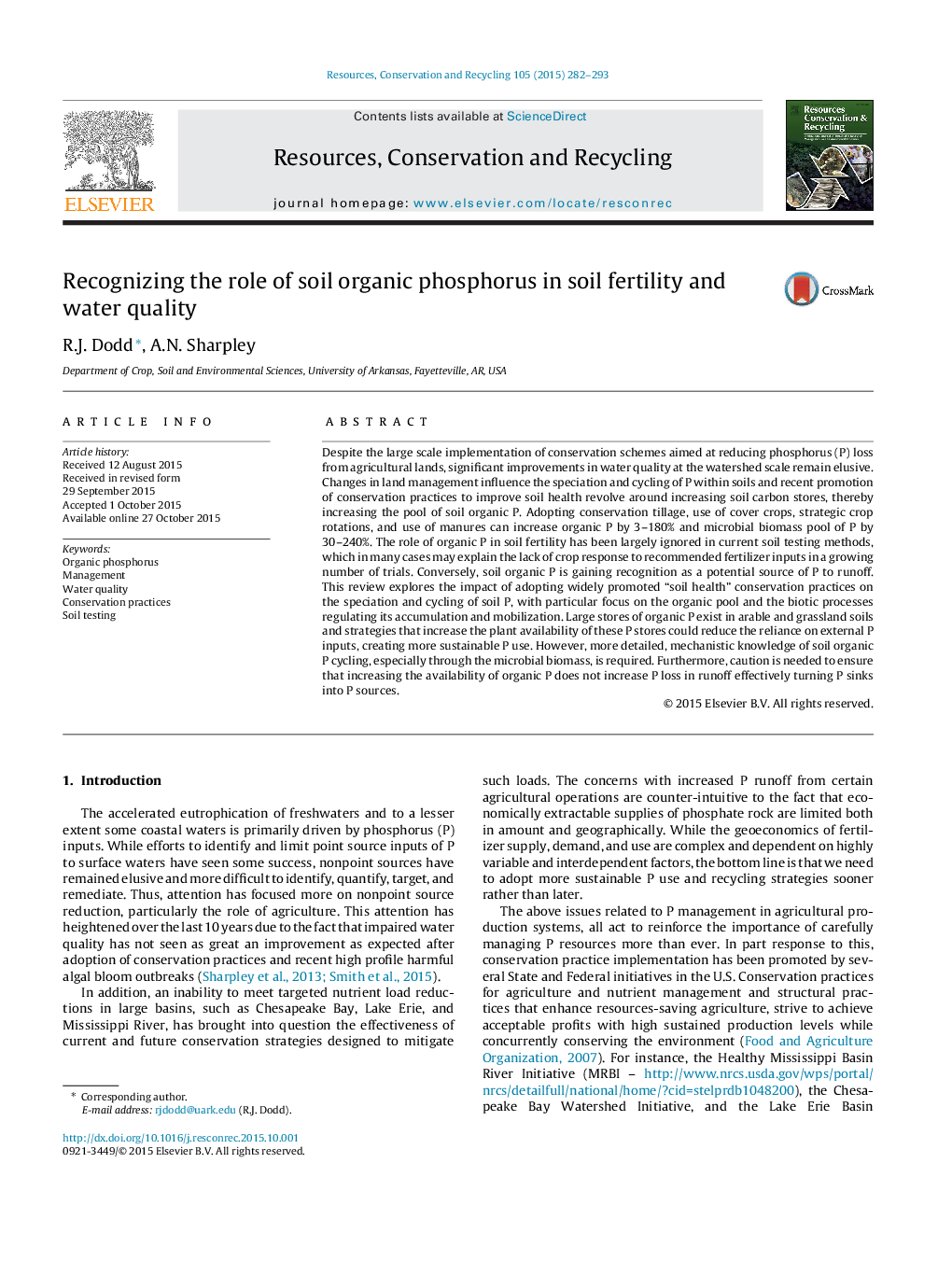| کد مقاله | کد نشریه | سال انتشار | مقاله انگلیسی | نسخه تمام متن |
|---|---|---|---|---|
| 1062746 | 948175 | 2015 | 12 صفحه PDF | دانلود رایگان |
• Reviews the impact of the USDA's soil health initiative on soil organic P pools.
• Shows that promoting organic C stores increases organic P in agricultural soils.
• Suggests that organic P is not adequately accounted for in soil testing methods.
• Discusses the impact on organic P release in relation to water quality.
• Concludes that sustainable P management must consider both inorganic and organic P.
Despite the large scale implementation of conservation schemes aimed at reducing phosphorus (P) loss from agricultural lands, significant improvements in water quality at the watershed scale remain elusive. Changes in land management influence the speciation and cycling of P within soils and recent promotion of conservation practices to improve soil health revolve around increasing soil carbon stores, thereby increasing the pool of soil organic P. Adopting conservation tillage, use of cover crops, strategic crop rotations, and use of manures can increase organic P by 3–180% and microbial biomass pool of P by 30–240%. The role of organic P in soil fertility has been largely ignored in current soil testing methods, which in many cases may explain the lack of crop response to recommended fertilizer inputs in a growing number of trials. Conversely, soil organic P is gaining recognition as a potential source of P to runoff. This review explores the impact of adopting widely promoted “soil health” conservation practices on the speciation and cycling of soil P, with particular focus on the organic pool and the biotic processes regulating its accumulation and mobilization. Large stores of organic P exist in arable and grassland soils and strategies that increase the plant availability of these P stores could reduce the reliance on external P inputs, creating more sustainable P use. However, more detailed, mechanistic knowledge of soil organic P cycling, especially through the microbial biomass, is required. Furthermore, caution is needed to ensure that increasing the availability of organic P does not increase P loss in runoff effectively turning P sinks into P sources.
Journal: Resources, Conservation and Recycling - Volume 105, Part B, December 2015, Pages 282–293
